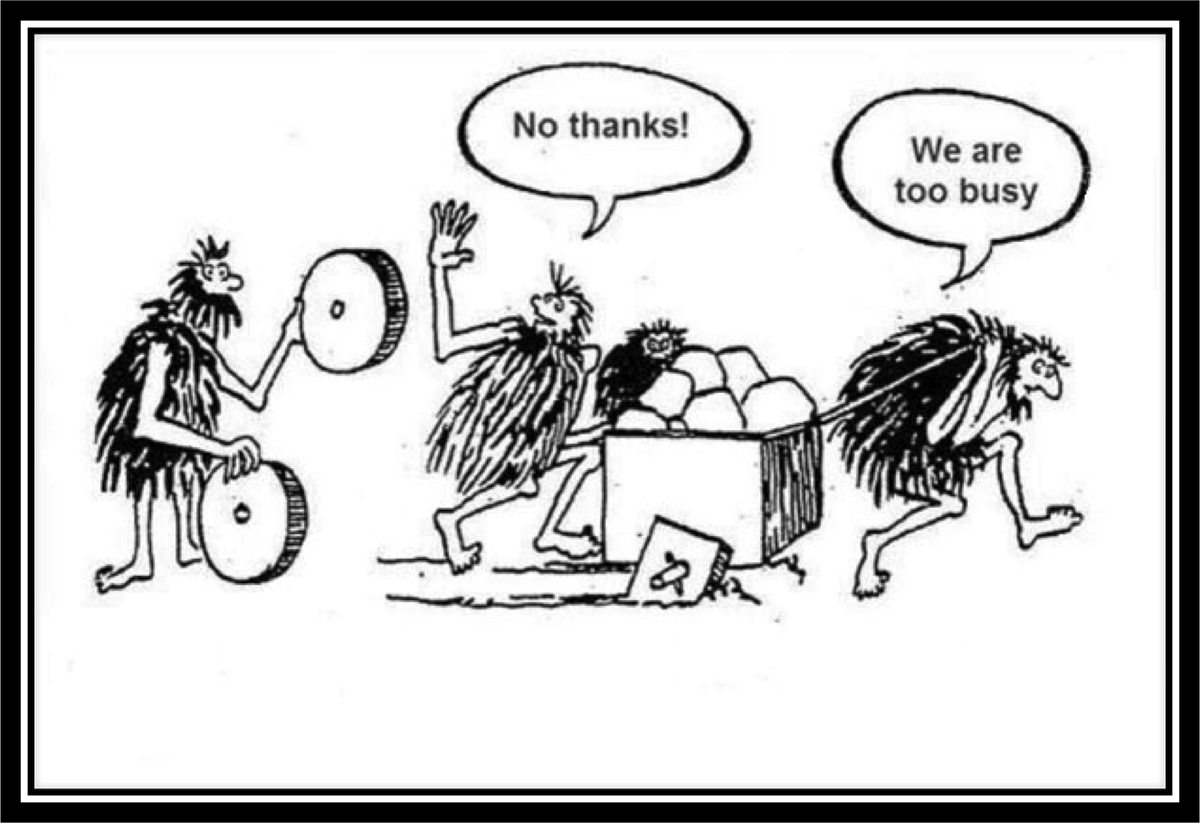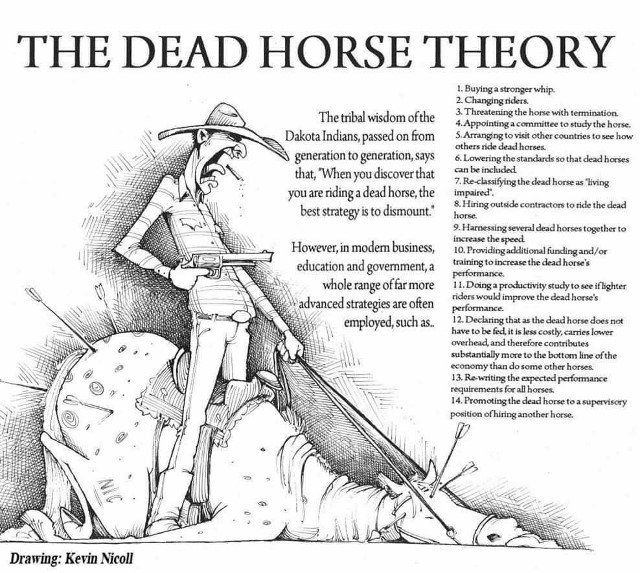It's Groundhog Day. Don't be Bill Murray!
Lloyd Wolf | Professional EOS Implementer®
It’s Groundhog Day. Don't be Bill Murray!
Have you seen the 1993 movie Groundhog Day with Bill Murray, where he finds himself inexplicably living the same day over and over again? Do you ever feel like Bill Murray? Do you sometimes find yourself and your business in the same place, year after year?
Many entrepreneurs, business owners and leaders start the year off with the best of intentions – taking time in December or January to set goals and make plans for everything you’re going to accomplish in the coming year. Maybe it’s increasing growth or profitability, maybe’s it’s launching a new product or service, maybe’s it’s solving some lingering issues with your people or adding a key new position, maybe it’s the company breaking through to the next level, or maybe it’s taking control of your time and getting more peace and balance in your life.
Then life happens, business happens, issues and challenges arise – I call this getting hit by “dodgeballs”. The next thing you know, it’s Labor Day, Halloween or Thanksgiving and you stumble across the plans you made at the beginning of the year. You grind to make some progress by the end of the year – like college students cramming for a final exam. You manage to get a few of your original goals addressed, but not many of them.
You swear this is the last year this is going to happen, and that things will be different next year! And then the same pattern happens again the next year. It’s like Groundhog Day, year after year. Some years are better than others, but rarely do you seem to accomplish everything you said was important to get done.
To overcome this Groundhog Day endless loop of not getting their goals and plans accomplished, I teach my clients
how they can gain significantly better traction. First, everyone must set specific, measurable priorities. Second, you must meet better as an organization. In companies running on EOS® (the Entrepreneurial Operating System®)
these two essentials are called Rocks and a Meeting Pulse™.
Rocks
Early in the EOS Process® when working with my clients, I facilitate a series of discussions with the leadership team to first establish their clear longer-term vision for the organization – where we’re going to be in 10 years (we call it our 10-Year Target™). Then we bring it “down to the ground” one step further, and establish our 3-Year Picture™ – where do we need to be just 3 short years from now, to be ontrack for our 10-Year Target?
Then we bring it “down to the ground” another step further, and establish 3 to 7 priorities for the year, we call them Goals. What must we accomplish this year, to be ontrack for achieving our 3-Year Picture in just 3 short years?
Then we again bring it down to the ground one final step, and establish 3 to 7 priorities for the Quarter. We call these priorities “Rocks” and we create a 90-Day World®. Instead of being overwhelmed by the huge tasks of accomplishing everything in our 3-Year Picture this year, or accomplishing all of our Goals in our 1-Year Plan this month or even this quarter, we simply break them down into more manageable pieces called Rocks. Then we keep everyone’s attention focused on getting their Rocks done over the next 90 days. My clients find Rocks create a short-term focus. To the degree everyone can stay laser focused on completing their Rocks, you’ll be gaining traction towards your goals and longer-term vision.
Meeting Pulse
Gino Wickman (creator of EOS and founder of EOS Worldwide) found in his own family’s business, and again when working with other members of the Entrepreneur’s Organization (EO), that you could get the leaders of the company together for a full-day offsite meeting and get them all on the same page. But 90 days later, for some reason, the team would start to sway off track and lose focus.
Gino found he then had to hold another full day meeting and pull everyone back together. Ultimately, he found it was just human nature, and 90 days is about as long as a we can stay focused as human beings. Seeing this cycle over and over again, Gino built a great Quarterly Meeting Pulse into EOS, where the team gets together every 90 days for a full-day meeting (preferably offsite). And he developed a powerful quarterly meeting agenda, which includes (in summary): Segue, Reviewing the prior quarter, Reviewing the vision and the plan (using the V/TO™ tool), Establishing next quarter’s Rocks, Tackling key issues, Next steps and Conclude.
Gino also built a great Annual Meeting Pulse into EOS, where an extra day is added to that quarter’s meeting, thus creating a 2-day Annual Planning Meeting. And he developed a powerful annual meeting agenda, which includes (in summary): Segue, Reviewing the prior year and quarter, Team health building, SWOT (Strengths, Weaknesses, Opportunities, Strengths) analysis, Reviewing and resetting the vision and the plan (using the V/TO tool), Establishing next quarter’s Rocks, Tackling key issues, Next steps and Conclude.
Finally, we narrow the meeting pulse from quarterly down to weekly. Implementing a great weekly Meeting Pulse will create traction and help you execute on the vision. Once the quarterly priorities (Rocks) are set, the team meets weekly to drive focus and accountability, to solve issues and communicate. We call this the Level 10 Meeting™. Gino developed a powerful agenda for this weekly Level 10 Meeting, which includes (in summary): Segue, Scorecard review, Rock review, Customer/employee headlines review, To-Do List review, Solving issues (we call it IDS™ – Identify, Discuss and Solve) and Conclude.
The Weekly Meeting Pulse is your opportunity to make sure that everything is on-track. If something is off-track, you work to get it back on-track. If you’re on track for the week, then your on-track for the quarter. If you on track for the quarter, then you’re on-track for the year, and so on.
Avoiding Groundhog Day
Establishing specific, measurable priorities (Rocks) for everyone every 90 days, and having a great Meeting Pulse (Annually, Quarterly, Weekly) helps companies gain significantly more traction for achieving their vision, and eliminates the feeling of Groundhog Day and finding yourself and your business in the same place, year after year.
If you’d like to learn more about Rocks and Meeting Pulse, and how companies running on EOS gain more traction and avoid the Groundhog Day feeling, please contact me.
Lloyd Wolf
is a Professional EOS Implementer®.
He works with business owners and senior leaders located in the Greater Pittsburgh Area and Western Pennsylvania – as a teacher, meeting facilitator and business coach – to help them implement EOS® (the Entrepreneurial Operating System®) in their organizations. Contact Lloyd
today for more information about how you can experience "Vision, Traction and Healthy" in your company using EOS.
Share This Blog
You might also like

I’m sure you’ve seen cartoons like this one. It does a great job of humorously exposing the universal problem many business owners and leaders find themselves in – feeling so overwhelmed with the daily/weekly/monthly challenges of running their business that they are blind and deaf to solutions that can eliminate (or at least significantly reduce) those challenges. I call this “but I’m too busy to solve my biggest problems”. Whether you are putting out fires with customers or clients, dealing with people issues, working on growth or profitability, juggling projects or simply going about your day-to-day job, do you feel like there never seems to be a good time to take on anything else? People often use “but I’m too busy” as an excuse not to have to deal with the real challenges or issues at hand. They often hide behind, buy into, and believe they are truly too busy. If you feel this way or have ever felt this way, that just makes you normal. Lots of business owners and leaders feel that way, or have felt that way at some point. I know there were times when I felt that way when I owned and was running my former IT business. Sometimes those daily/weekly/monthly challenges felt so overwhelming. But just look at the cartoon. Isn’t it painfully obvious the cavemen pulling and pushing the cart should take the time to get assistance from the caveman offering them wheels? I was blessed in 2015 when a trusted business friend handed me a copy of the book Traction: Get a Grip on Your Business by Gino Wickman and introduced me to EOS® (the Entrepreneurial Operating System®). Think of EOS as the round wheels in the cartoon. EOS is a complete and proven business system, with simple and practical tools, that align and synchronize all the pieces of a business. It creates a clear overall vision, provides real traction in achieving that vision, and leads to more control, better results, and healthy teams. EOS addresses business issues at their root – rather than spot treatments and rather than treating symptoms of issues. Think how much easier life would be for the cavemen moving their cart if they had the benefit of round wheels! For me and my leadership team, yes implementing EOS was work and required our time. But it ultimately SAVED us time and made things better. What opportunities do you have to make things better for you and your business – but you’ve said you’re too busy? Are you really going to have more time next month? Next Quarter? Next year? Or will you still be just as busy if you don't make a fundamental change? I encourage you to pause, take a step back, look around, and see what opportunities are right in front of you that could make things better. Are you feeling too busy with your business? Are you frustrated with the status quo and wish there was a better way? I am blessed to be able to help business owners and leaders implement a set of wheels that have successfully helped thousands of others run better businesses and live better lives. If you’re open to learning more, reach out to me – if you’re not too busy 😊.

I was recently talking with one of the leaders of an organization I met last summer. He shared with me that he and some other members of the management team felt an important change needed to be made, but the top leader of the organization wasn’t ready to make the necessary change. This is certainly not an unusual situation. There is a tendency in all organizations, and even in our personal life, to resist change. That’s true even when we realize that what we’re doing is no longer as effective as it once was, or is completely ineffective and fails to provide any value. That discussion with the business leader reminded me of “The Dead Horse Theory” my friend and mentor shared with me a little over a year ago. It goes something like this: The tribal wisdom of the Dakota Indians — passed on from generation to generation — says that when you discover that you are riding a dead horse, the best strategy is to dismount. Just get off. Sounds pretty simple, but it doesn’t take very long looking around and talking with people to realize that it is far from simple. Change is always hard, and just because everyone knows it needs to happen doesn’t mean it will. The reality is that today’s organizations (businesses, non-profits, churches, educational institutions) and even us as individual people, have found a whole range of creative and far more advanced strategies to use when dealing with a dead horse, such as: Buying a stronger whip. Changing riders. Threatening the horse with termination. Appointing a committee to study the horse. Proclaiming, “This is the way we’ve always ridden this horse.” Arranging to visit other countries to see how others ride dead horses. Declaring, “God told us to ride this horse.” Develop a training session to improve our riding ability. Reminding ourselves that other organizations ride this same kind of horse. Determining that riders who don’t stay on dead horses are lazy, lack drive, and have no ambition – then replacing them. Lowering the standards so that dead horses can be included. Reclassifying the dead horse as “living-impaired.” Hiring an outside consultant to advise on how to better ride the horse. Harnessing several dead horses together to increase the speed. Confessing boldy, “This horse is not dead, but alive!” Providing additional funding and/or training to increase the dead horse’s performance. Riding the dead horse “outside the box.” Get the horse a new or refreshed website. Killing all the other horses so the dead one doesn’t stand out. Taking a positive outlook – pronouncing that the dead horse doesn’t have to be fed, it is less costly, carries lower overhead, and therefore contributes substantially more to the bottom line of the organization’s budget than do some other horses. Rewriting the expected performance requirements for all horses. Promoting the dead horse to a supervisory position of hiring another horse. Name the dead horse, “paradigm shift” and keep riding it. Riding the dead horse “smarter, not harder.” Remembering all the good times you had while riding that horse. We all have some dead horses we are riding. We need to first admit the horse is dead. We often live in denial. You can try to beat it, you can flog it, this will not change the fact – the horse is dead. So what dead horses (i.e. structure, people, processes, policies, products, services, customers) are you clinging on to in your organization? One of the things I love about working with my clients to implement the EOS® (the Entrepreneurial Operating System®) in their organizations is the help it brings to avoiding riding a dead horse. The EOS Toolbox™, the Meeting Pulse™ (annual, quarterly, weekly) and meeting agendas, and the open and honest dialog between the leadership team members allows them to have those difficult, but very necessary, conversations – rooted in trust and HEALTHY conflict, without the fear of grudges, politics or guilt. The simple and practical tools used by companies running on EOS allows the team to know when they’ve got a wrong person in the organization, when someone is sitting in the wrong seat, when something in the organization is off-track and needs to be put back on-track, and when its time to make a change – simply put, when they need to dismount a dead horse. If something is off-track in your organization and it feels like you’re “riding a dead horse”, ask me how implementing EOS can help you make the change(s) needed to solve the issue, as well as give you the tools to make changes that will be needed in the future as your organization grows.

When I tell people I am a Professional EOS Implementer® in Pittsburgh, sometimes they ask me "Lloyd, I have read the Traction book, can't my team and I just implement EOS ourselves?" I tell them, Yes you can, but companies implementing EOS with the help of a Professional EOS Implementer get the best results. Here are 10 reasons why:

